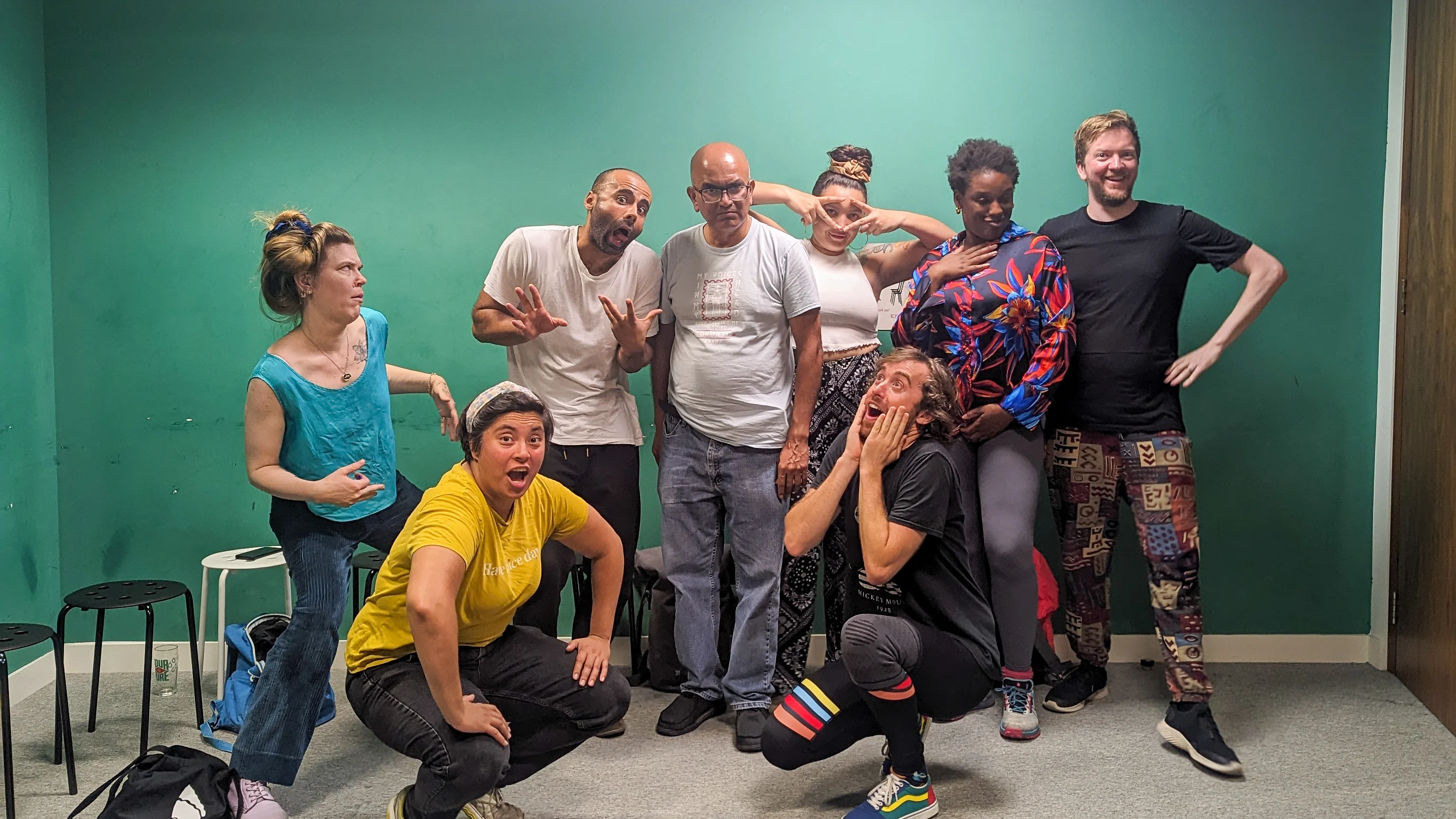
Clowning for Improv - Playface x Hoopla
Theatre Deli, London
Learn More

These are recurring frameworks you’ll see in sketch comedy. Think of them as engines for ideas — you can take almost any premise and reframe it into one of these structures. The aim is not to limit yourself but to give you quick starting points when building a sketch.
Take a setting or activity the audience immediately understands, then introduce one element that disrupts it in a surprising way. The recognisable setting builds comfort and relatability, while the twist jolts the scene into comedy.
The humour comes from mining every physical possibility in a single moment, object, or action. Often light on dialogue, these sketches thrive on timing, facial expressions, and inventive use of space or props.
A basic goal becomes a monumental challenge due to impractical tools, bad luck, or the character’s own incompetence. The fun is in the mounting frustration and inventive failures.
See The Simple But Impossible Task
Borrow the tone, pace, and style of advertising but apply it to something absurd, overly honest, or sinister. Play with over-earnest voiceovers, exaggerated visuals, and false promises.
Start from a relatable truth and heighten it until it’s absurd. Works best when the core observation is specific and recognisable.
Two or more characters locked in a battle to outdo each other. Each beat raises the stakes and speeds the pace until the ending flips expectations or burns out spectacularly.
Take a familiar genre or cliché and push its traits to an extreme. The audience’s knowledge of the source material is what fuels the laughs.
Flip the expected outcome or motivation of a cliché. Ask “what if this familiar story went the other way?” and commit to the new logic.
Lift the format of one genre or situation and place it in an unrelated world. The clash of tone and setting is the main comic driver.
Lead the audience to expect one thing, then reveal something that reframes the entire sketch. Works well for short, sharp sketches or as a final beat.
Centred on one strong comic voice, this structure allows a character’s worldview to drive the humour. Often minimal in staging, relying on writing and performance.
Begin with a reasonable premise and heighten each beat until the situation is wildly out of control. Needs a strong internal logic so it feels like a natural progression.
Characters swap expected roles, leading to awkward or surprising behaviour. The joke comes from seeing familiar dynamics flipped.
Everything serves to highlight one character’s traits. Works best when the character is distinctive and reacts strongly to events.
A faux-documentary format that treats absurd events with total seriousness. Interviews and cutaways help layer the comedy.
Uses the rhythms of Q&A to expose absurd characters or situations. The interviewer’s straightness often contrasts with the guest’s chaos.
Parodies news broadcasts or current affairs shows. Works well for lampooning real events or inventing ridiculous ones.
Mimics the format of a quiz or challenge show but with nonsensical rules or prizes. Often driven by the host’s authority and contestants’ desperation.
A step-by-step guide where each step becomes stranger or more unhelpful. The deadpan delivery contrasts with the absurd content.
Premises that deliberately reject logic or realism. Often works best when performed with sincerity and commitment.
Puts two characters, worlds, or situations side-by-side to highlight differences or unexpected similarities.
Asks “what if?” and explores the consequences of a single altered fact. The change should ripple through the scene in surprising ways.
Takes a known historical event or figure and plays with anachronisms, personality changes, or altered outcomes.
Collides distinct cultural styles, values, or tropes. Works when the mix is both surprising and precise.
Takes an expected stereotype and flips it, revealing something fresh or contradictory.
Finds humour in awkward parties, bad dates, tense dinners, or forced small talk. The tension drives the laughs.
Someone in power behaves badly, ignorantly, or childishly. The fun comes from the gap between status and behaviour.
A character is placed in an alien environment, struggling to adapt. Works when their reactions reveal more about them than the setting.
Captures a mundane moment and finds humour in its small details. Often low stakes but rich in relatable beats.
The sketch loops back to where it started, often with new meaning or irony.
Addresses off-limits topics but undercuts tension with absurdity or exaggeration.
Confusion over who’s who drives the scene. Works well with quick reveals and reversals.
Tip: Try reframing your existing sketches into a different structure from this list. Even a small structural shift can unlock a new angle.
